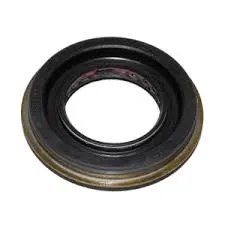10 月 . 18, 2024 19:54 Back to list
Innovative Solutions for Floating Oil Seal Technology and Applications
Understanding Floating Oil Seals Mechanisms and Applications
Floating oil seals are critical components in various industrial applications, particularly in engines, turbines, and hydraulic systems. Their primary function is to prevent the leakage of fluids, especially oils, while allowing for some degree of shaft movement or misalignment. This article delves into the mechanisms, materials, advantages, and applications of floating oil seals, explaining their significance in modern machinery.
Mechanism of Floating Oil Seals
Floating oil seals operate on the principle of maintaining a fluid barrier while accommodating axial and radial movements. Unlike traditional seals that are rigidly fixed, floating seals are designed to float on the rotating shaft, allowing them to adjust to slight misalignments. This unique design is typically achieved through the use of a spring-loaded lip. The lip makes contact with the shaft as it rotates, creating a barrier that keeps oil contained within the system. The spring not only helps to maintain the contact pressure but also ensures that the seal remains intact and effective, even under varying operational conditions.
The adaptation to movements is crucial for maintaining the operational efficiency of machinery, as even minor misalignments can lead to increased wear and tear, eventual seal failure, and costly downtimes.
Materials Used in Floating Oil Seals
The materials used in the construction of floating oil seals are essential for their performance and durability. Common materials include elastomers, such as nitrile rubber and fluorocarbon rubber, which are chosen for their excellent oil resistance and flexibility. Additionally, the seals often incorporate reinforcing materials to enhance their mechanical strength. In more demanding environments, floating oil seals may be made from thermoplastic elastomers (TPEs) or polyurethane, which provide better resistance to abrasives and high temperatures.
Special coatings may also be applied to reduce friction and enhance the lifespan of the seals. The choice of materials ultimately depends on the specific application conditions, such as temperature range, type of fluid being sealed, and environmental factors like exposure to chemicals or UV light.
floating oil seal

Advantages of Floating Oil Seals
One of the primary advantages of floating oil seals is their ability to accommodate shaft movement without sacrificing sealing integrity. This adaptability extends the lifecycle of both the seals and the machinery they protect. In addition, floating oil seals help reduce friction between the seal and the shaft, enhancing overall efficiency and reducing heat generation.
Moreover, the design simplicity and ease of installation of floating oil seals make them a preferred choice for many manufacturers. Their reliable performance can lead to significant cost savings in maintenance and repairs over time. Additionally, by preventing fluid leaks, they contribute to environmental protection by minimizing the risk of contamination.
Applications of Floating Oil Seals
Floating oil seals are employed in numerous industries, including automotive, aerospace, marine, and manufacturing. In the automotive sector, they are found in gearboxes, engine sump systems, and differential assemblies. In aerospace, these seals can be crucial for preventing leaks in hydraulic systems and fuel tanks. Meanwhile, industrial machinery often utilizes floating oil seals in pumps, compressors, and turbines, where maintaining fluid integrity is paramount.
In the realm of renewable energy, floating oil seals also play a vital role in wind turbines, where they help sustain effective lubrication systems despite the high levels of vibrational movement experienced.
Conclusion
Floating oil seals are indispensable components that enhance the efficiency and reliability of various machines. Their unique ability to adapt to movement while providing an effective seal against fluid leakage underscores their significance across numerous industries. As technology continues to evolve, advancements in materials and design will likely further enhance the performance of floating oil seals, presenting even more opportunities for innovation and application in the future. As industries strive for efficiency, sustainability, and reliability, floating oil seals will continue to play a critical role in achieving these goals.